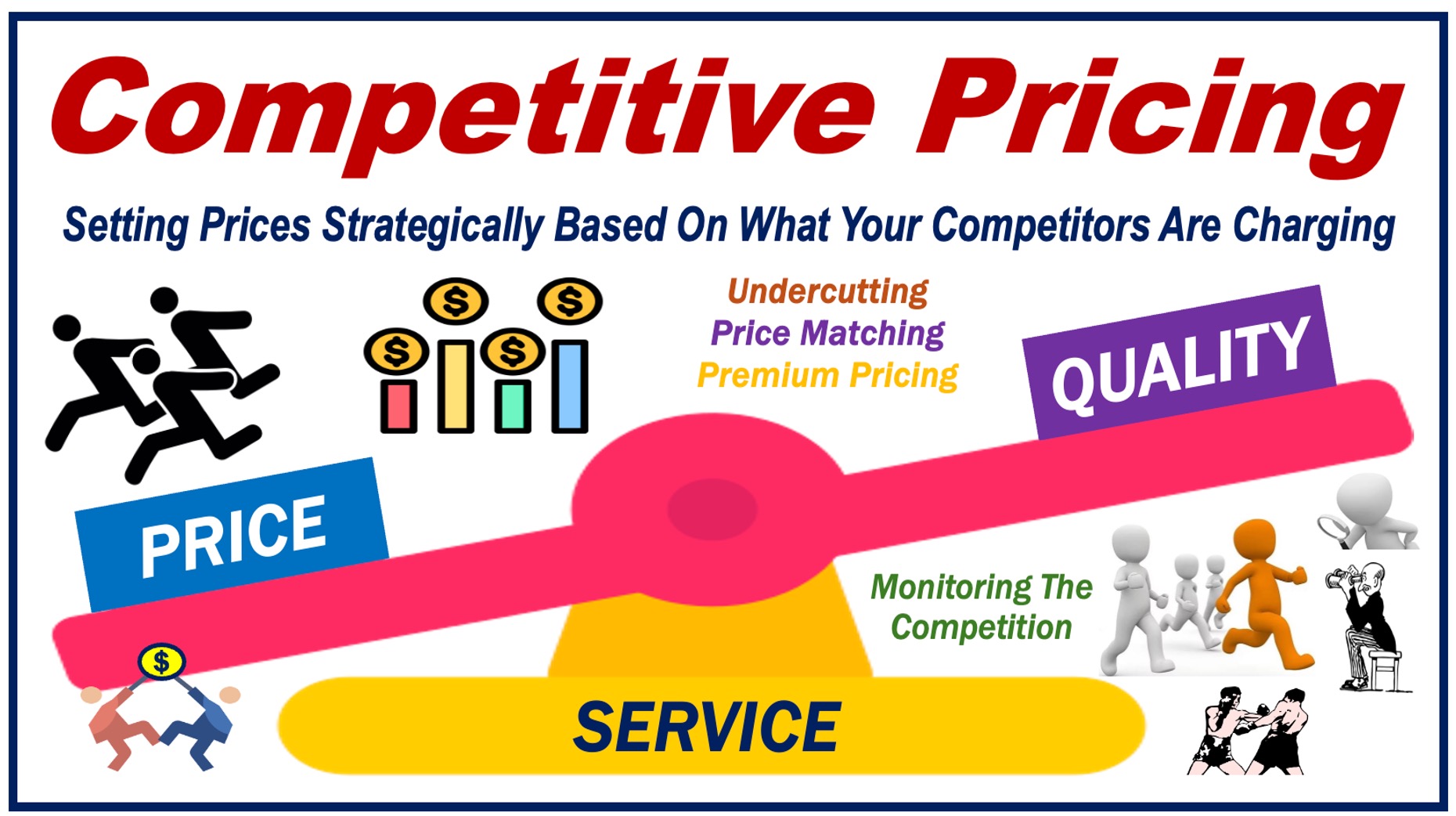If you set your prices based on your competitors’ prices, you are involved in Competitive Pricing, which is also known as Competitor-Based Pricing. Competitive pricing means either matching, undercutting, or even pricing higher than your rivals’ prices.
Businesses all over the world use this strategy in the hope of attracting more customers and gaining market share. It is commonly used by companies that sell the same or very similar products or services.
New businesses commonly adopt a competitive pricing strategy because they do not know what prices their core buyer persona would prefer. One way to find out is to look at what other companies that are selling the same or similar products charge.
Although production costs matter when trying to determine what price to charge for a product, how much consumers are willing to pay and what your competitors are charging matter much more. Market forces, that is, the forces of supply and demand, are the main drivers of prices.
Pros.com has the following definition of the term:
“Competitive pricing is the process of strategically selecting price points for your goods or services based on competitor pricing in your market or niche, rather than basing prices solely on business costs or target profit margins.”
Understanding the competition
When devising your pricing strategy, it is crucial to find out as much as you can about your competitors. Try to answer the following questions:
- Product Features
Do your competitors’ products do more, or less, than yours?
Are they more innovative and /or user-friendly than yours?
- Quality of Offerings
Are they using better materials or offering a more polished service?
Do their products last longer or require less maintenance than yours?
- Reputation and Branding
What is the general perception of their brand in the market?
How effectively do they manage customer feedback and public relations?
- Pricing Strategies
What price range are your competitors operating within?
How frequently do they offer discounts or promotions?
- Target Customer Base
Who are their primary customers?
What demographics are they targeting?
- Market Position and Share
What is their market share compared to yours?
How do they position themselves in the market?
- Customer Service and Support
What kind of customer support do they offer?
Are there any additional services they provide that enhance customer satisfaction?
- Innovation and Technology
How often do they update or release new products?
Are they leaders in adopting new technologies or trends?

Setting your prices
Do not start thinking about setting your prices until you fully understand what your competitors are doing. When you have gathered and analyzed as much data as possible, consider one of these three competitive pricing strategies:
-
Price-Matching
If what you are selling is the same or very similar to your competitors’ offerings, match their prices to keep things simple.
-
Undercutting
If you charge slightly less than your competitors, you may tempt consumers who are looking for the best deal. However, be careful not to end up selling at a loss. Remember, you are in business to make a profit.
-
Premium Pricing (pricing higher)
You will need to offer something that your competitors do not have, such as superior quality, unique features, or a stronger brand. Again, be careful; consumers must feel that they are getting value for money. If you get this wrong, you could be in trouble.
Competitive pricing is not just about price
Price matters to consumers, but it is not the only thing they consider when deciding whether to purchase something. The following factors are also important:
-
Value
Does your product save customers time or solve a problem better than the competition?
An example could be a smartphone with batteries that charge faster than competitors’, saving users valuable time.
-
Customer Service
Do you offer exceptional support that makes your product more appealing?
For example, offering 24/7 live chat ensures immediate assistance, which can boost customer satisfaction and trust.
-
Convenience
Is your product or service easier to find, buy, and use?
Netflix is successful partly because its universal app availability makes it so easy to access and subscribe to.
The benefits of competitive pricing
There are several advantages to using competitive pricing:
-
Staying Relevant
It helps you keep your prices in line with your industry and what customers expect to pay. In other words, it keeps your prices relevant.
-
Increased Attractiveness
Competitive pricing can draw in new customers who are hunting for the best deal. In other words, you can widen your customer base.
-
Boosting Profitability
By understanding competitor prices and focusing on value, you can optimize your pricing to maximize profits.
For example, by slightly undercutting a major competitor’s prices while controlling costs, you can attract price-sensitive customers, increase sales volume, and potentially raise overall profits if the price cut is less than the sales boost.
Final thoughts
Competitive pricing is a dynamic strategy – you have to work at it all the time, it is not something you do once and then forget about it.
Today’s fiercely competitive marketplace is forever changing. A new law, economic sanctions, technological advancements, shifts in consumer preferences, or new competitors mean you need to adjust prices over time.
By keeping an eagle eye on your competitors, while also emphasizing the overall value you offer, you’ll put your business in a strong position to succeed.
